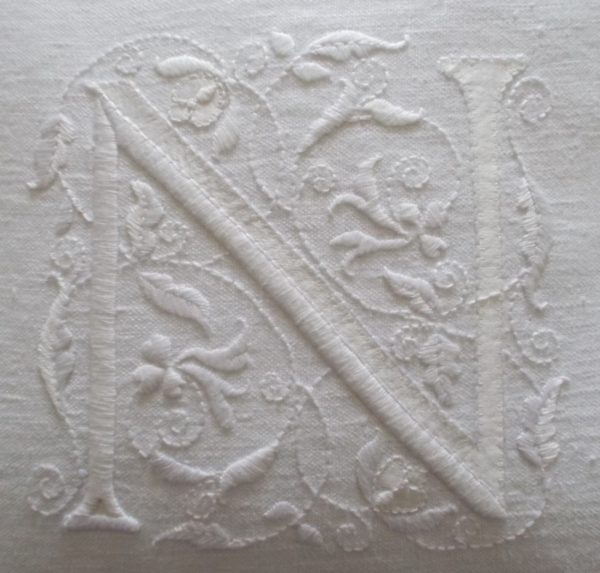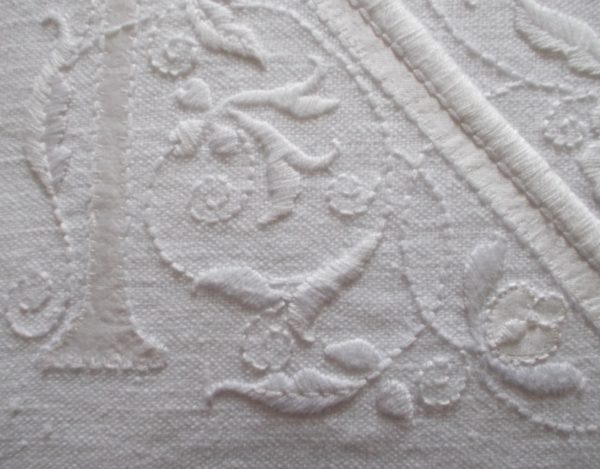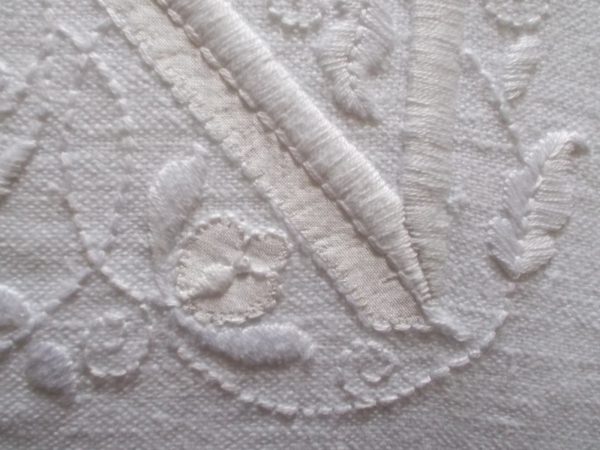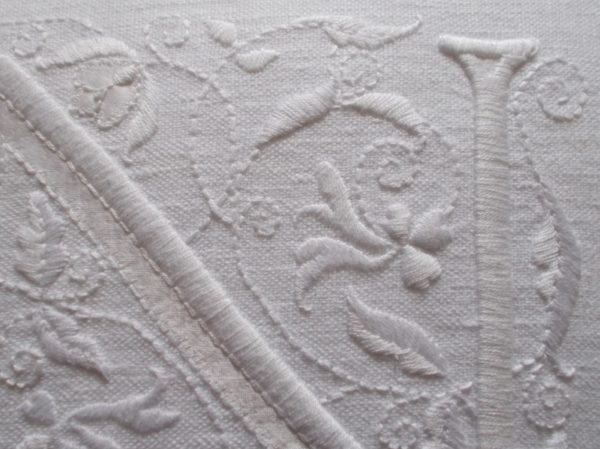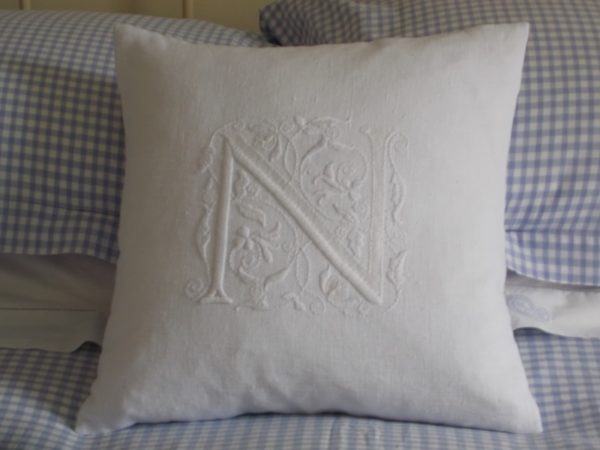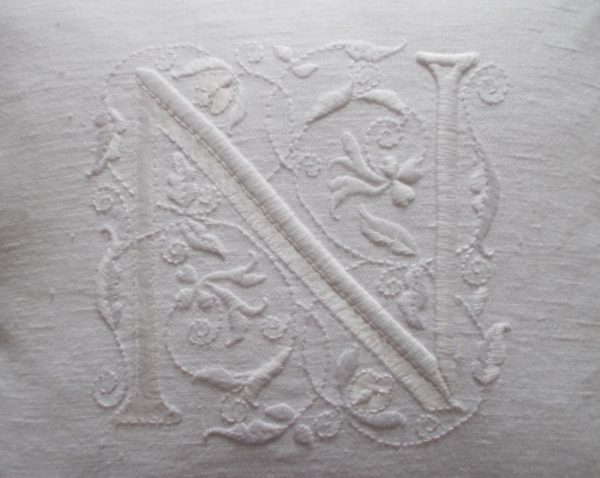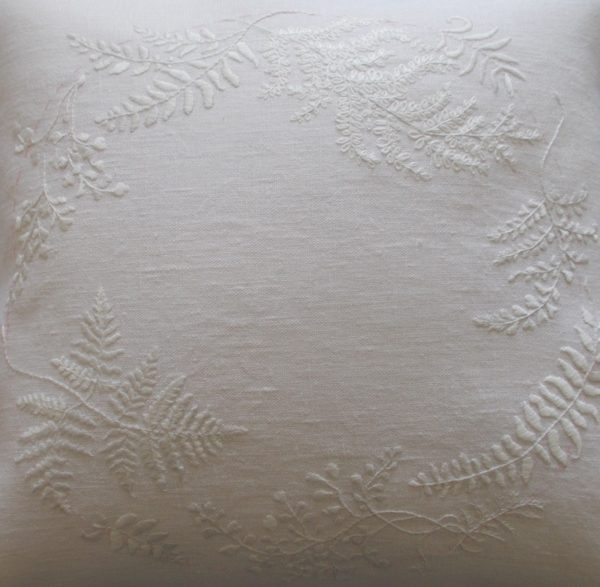
Whitework cushion with embroidered ferns (hand embroidered by Mary Addison)
For plants that are all leaf and no flower, ferns attract a passionate following. But, when you stop to think, a lack of distracting flowers allow the leaves to reveal themselves as real stunners, whether the feathery froth of the Maidenhair Fern (Adiantum), the sword-like Hart’s Tongue (Asplenium) or the sturdy, pinnate fronds of something like the common wood fern (Dryopteris) whose new leaves uncoil themselves from tight spiralling fiddleheads, like little slingshots poised in the moment before firing. For many of us living in a temperate climate, they are the saving grace of damp gardens shaded over by tall trees or rescue from despair dank, rather dark basement areas where little else has chosen to flourish. Of Dryopteris, my little Royal Horticultural Society handbook (Ferns by Martin Rickard) says, somewhat ominously, “They will persist for a very long time, often outliving their owners, despite neglect.”
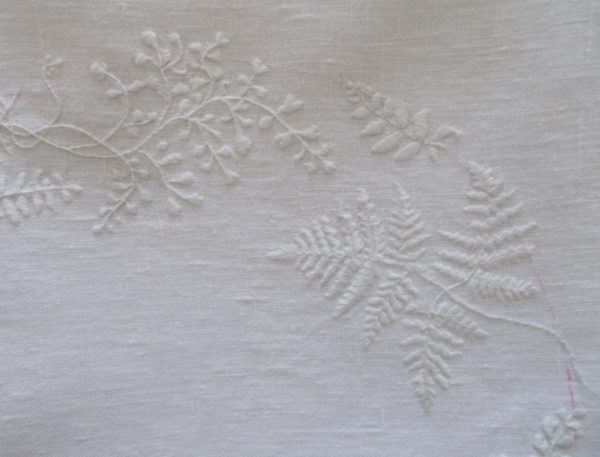
Detail : whitework cushion with embroidered ferns (hand embroidered by Mary Addison)
When I was a student in Oxford I lived for a time in a flat at the top of one of those wonderful, part crenellated and gabled North Oxford houses on Rawlinson Road. The house was occupied by a botany fellow at Jesus College, I think, who took such delight in leaves that he banned most flowering plants from his garden. A large window above the front door, filled with ancient intertwining knotty stemmed geraniums, leaves (mainly) pressed against the glass in a constant battle to get to the light, declared it to be the house of a botanist, more clearly than any sign could have done. We ventured little into the main part of the house but once I went into the kitchen, and passed by, or through, a gorgeous little room with black and white floor tiles and delft tiles around the fireplace. A design classic I’ve spent more than half my life wishing I could replicate!
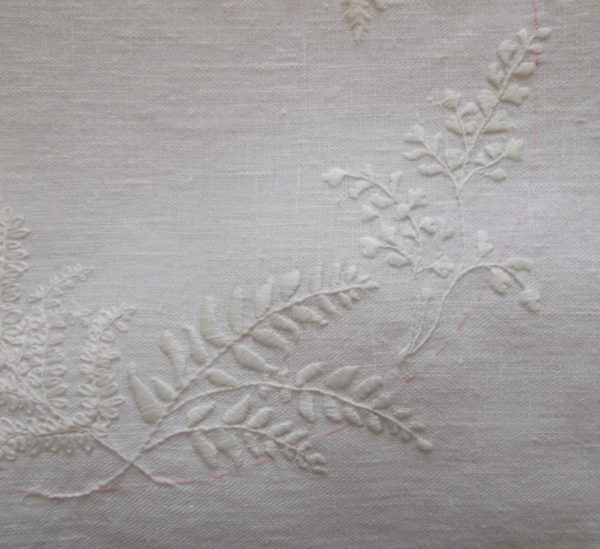
Detail : whitework cushion with embroidered ferns (hand embroidered by Mary Addison)
During lockdown Daughter No 2 stayed in an elegant North London town house decorated in Scandinavian tones of off white and greys. The garden, divided into three little ‘rooms’ was leafy with a few white flowers. Fern prints hung on the walls. This cushion is a small thank you for my daughter’s time there.
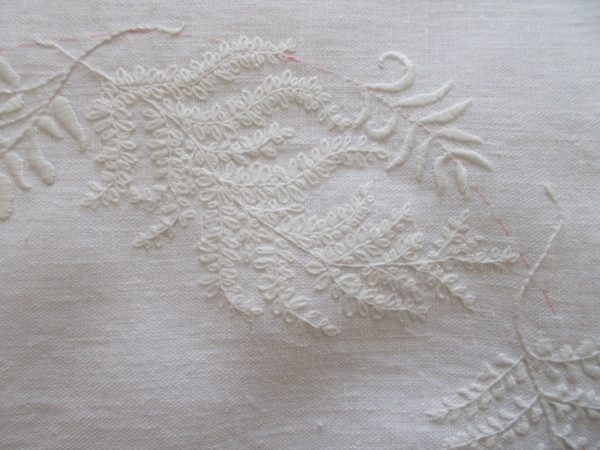
Detail : whitework cushion with embroidered ferns (hand embroidered by Mary Addison)
This week has seen the death of two style icons who figured large in the life of anyone who was a teenager in the 1960s.
Diana Rigg was not only beautiful and alluring but had a lovely natural voice which just enhanced her allure. For a while I had Emma Peel’s flick ups hair style and perhaps I even attempted vocal improvement, though I resembled her in no other way. In later years Diana Rigg got a bit heavier, styled her hair in a simple bob and wore her wrinkles with dignity. I particularly enjoyed her appearance in Detectorists where she played her real life daughter’s mother and a gentle, witty, wise mother-in-law where lazier scripts and acting could have made her a harridan. We have yet to see her last acting appearance in the new All Creatures Great and Small but reviewers loved her in the role and I’m sure we shall too.
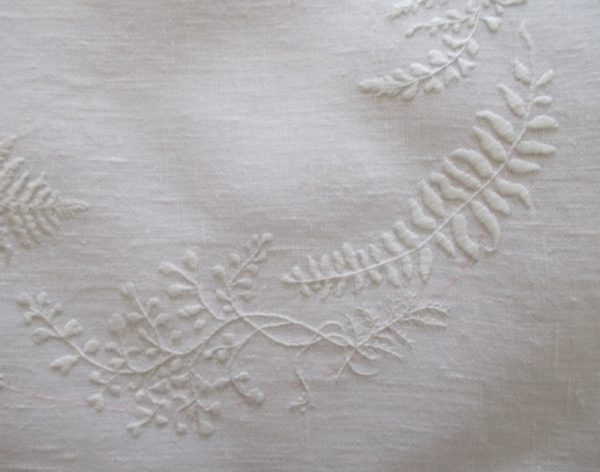
Detail : whitework cushion with embroidered ferns (hand embroidered by Mary Addison)
We knew Habitat before we registered who Terence Conran was. But it was because of him that we, along with most of the UK, took to the duvet, though only a man who rarely made his own bed could say “A few shakes and in 20 seconds the job is done. That’s how you make your bed.” He also introduced us to orange Le Creuset which many people spent the rest of their lives trying to justify replacing until, quite suddenly, recently, the colour became fashionable and we embraced the volcanic orange all over again. My first husband and I had a Habitat kitchen, most of which we got in a sale. The sliding doors were solid wood and, having had a supposedly handmade one since, I now know the carcasses were not so very different. The drawers were the weakest element as the wooden fronts fell off with irritating regularity, no matter what we did to mend them. The sofas and soft seating I didn’t care for, especially if upholstered in brown jumbo cord – and I think I was right as years later they were still with us, tortured into a second life, teetering on their way to death and destruction in student accommodation across the country. But the catalogues were genius and for a brief second even brown jumbo cord looked almost ok when photographed in a Parisian flat, everything painted white, floor to ceiling windows and acres of wooden floors. Lured but ultimately not taken in. For years, Conran’s ‘House’ book was a staple on shelves wherever you went and the go to textbook when you needed inspiration to solve a design problem. In spite of my criticisms, I can still recall the frisson of going into a Habitat store and coming out with a cheap but well designed item – wooden spoons, a water carafe, a Bialetti coffee maker for the hob or a metre of bright furnishing cotton for cushions.
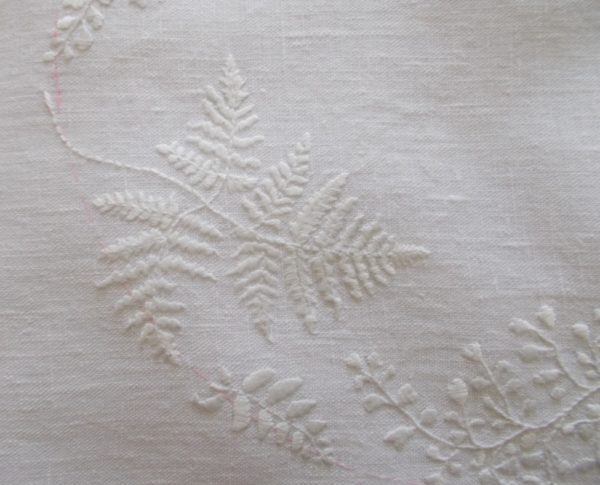
Detail : whitework cushion with embroidered ferns (hand embroidered by Mary Addison)
I like ferns so much I used leaves as stencils when I repainted a chest of drawers and blogged about here. It might also seem from this photograph that the walls are painted Le Creuset orange. In fact they are a lipstick red, which only worked because so much of the red lies behind about 15 ft of bookshelves! Delft plates from Isis Pottery in Oxford show my love of blue and white pottery has remained strong.
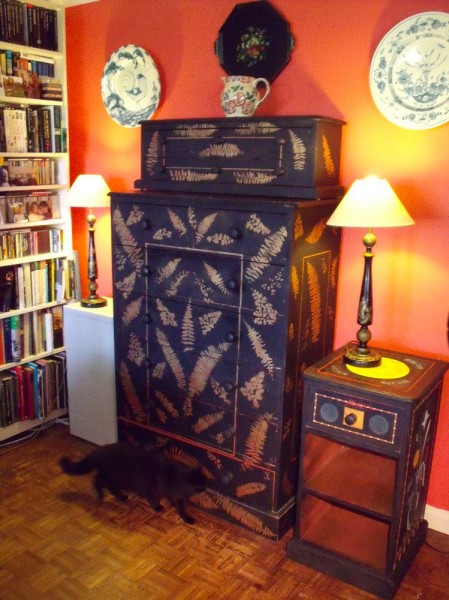
Fern chest of drawers stencilled with pressed leaves

